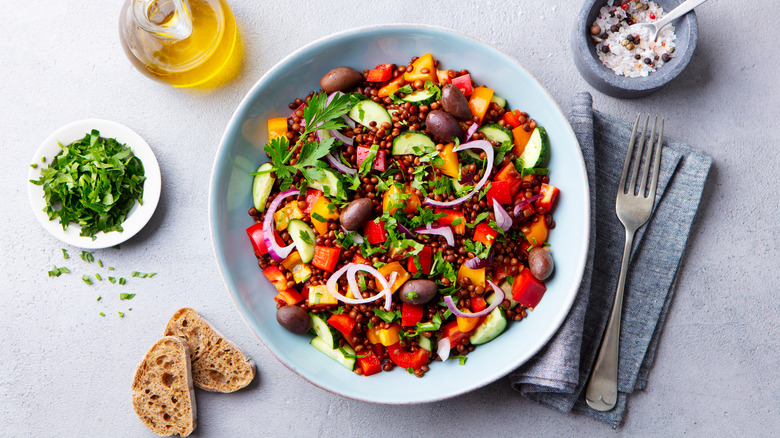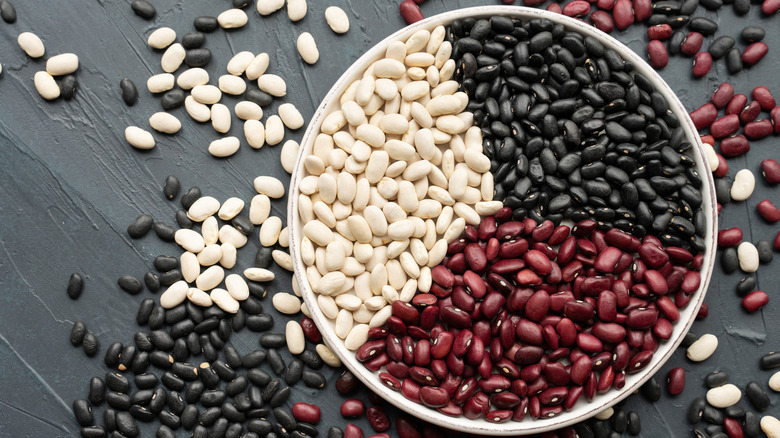What Is The Most Nutritious Type Of Bean?
Beans are often forgotten about when discussing hot new super foods, but the cheap and nutrient-dense powerhouses are a fantastic addition to any diet, whether you're plant-based or an omnivore. And this doesn't just mean green beans: From black to navy to pinto to kidney, there are major health benefits in every bean.
"Beans and legumes are the often unsung heroes of the plant-based world," dietitian Katherine Brooking told Eat This, Not That.
Beans — black, lima, fava, pinto, kidney, and navy beans, as well as chickpeas and lentils — are technically in the legume category, and they're all excellent sources of protein and fiber, as well as potassium. Soybeans have the highest protein content at 14.3 grams per serving, but lentils are a close second at 8.9 grams per serving. And unlike soybeans, which are often eaten in more processed forms like tofu, lentils can simply be eaten as they are. Soybeans and lentils also top the charts for iron and potassium content compared to other beans (via Harvard Health Publishing).
So does that mean that soybeans and lentils are the healthiest beans? It depends on your objectives.
What other beans are healthy?
Chickpeas also contain plenty of protein — 18 grams in a cup of canned chickpeas — dietitian Rebecca Scritchfield, R.D., told Men's Health. They're incredibly easy to add to your daily meals, since canned chickpeas can be easy salad toppers, ingredients for quick hummus, stew additions, or simply smushed up with other burger ingredients. Researchers also found that eating chickpeas regularly can lead to healthy cholesterol levels, likely thanks to the high level of fiber they contain.
Great Northern Beans — large white beans — are also high in protein content, with almost 20 grams per cup. They also have more potassium than a banana! "I love them in bean salads, white chili, and even smoothies. You can also puree them to use as a thickener for soups," dietitian Lauren Harris-Pincus. R.D.N., told Eat This, Not That.
For optimal cooking, don't expect to start preparing dried beans in the late afternoon to be ready for dinnertime. Unfortunately, the best way to prepare beans takes time — but very little effort. Start with a slow soak and leave beans covered with water overnight, and the next day, cook the beans by boiling them with water (three times as much water as beans in the pot), simmering gently. Start checking for 'done-ness' after 45 minutes, though depending on the bean type, it may take longer. You want the beans to be soft and easy to eat, not chewy. If you're in a rush, though, opt for lentils, since they don't require soaking and can cook relatively quickly (via the Mayo Clinic).


